It's the season for fantasy baseball rankings, and this one is for players who are rookie/prospect eligible, which has both a service time and playing time component. Some already have major league experience, but all are still considered Rookie of the Year eligible. I'm ranking them for 2021-only value, so not for their dynasty or keeper league value, and based on a head-to-head category scoring, but will mention players with standout skills for points leagues (like hitters' strikeout-to-walk ratio) as relevant. When referencing average around contact (batting average), power (homers) and plate discipline (strikeout-to-walk ratio), average is a .250 batting average and 15-18 homers in a 550 plate appearances, and 9% walks with 23% strikeout rate for hitters, while for pitchers the important averages are a 4.45 ERA and 9.0 K/9.
Almost every pitcher mentioned here is a starter, and those pitcher averages include relievers, so the standard for an average, or No. 4 starter, is actually lower than that, particularly in strikeout rate. There's a balance between impact/ability and opportunity/playing time which will be noted in the blurb, but the top dozen or so players will be Opening Day starters who will have to be seriously injured or really underperform to lose their spots. And if you have strong preferences for a particular type of prospect, moving one up/down a few spots is fair, as these rankings are pretty tightly packed from top to bottom.
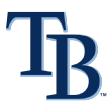 1. Randy Arozarena, OF, Rays
1. Randy Arozarena, OF, Rays
Arozarena has the unique combination of every-day tools, a clear spot in the lineup, not enough experience to have graduated prospect status, but a historic run of performance down the stretch in 2020. I don't think he's a runaway No. 1, since there isn't infield eligibility and he won't be truly elite in any category, but should be above average in every category, unless your league uses hitter strikeout rate.
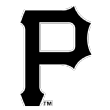 2. Ke'Bryan Hayes, 3B, Pirates
2. Ke'Bryan Hayes, 3B, Pirates
Hayes has an unusual profile for third base, as an elite defender (yeah, I know you don't care about that, but it does keep him in the lineup), plus runner, and hit-over-power type at the plate. I think he'll settle at something like .270 with 15-20 homers, a solid approach, and a decent number of stolen bases, and should get there relatively soon, possibly for all of 2021.
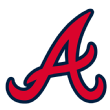 3. Ian Anderson, RHP, Braves
3. Ian Anderson, RHP, Braves
Anderson is my second-ranked pitching prospect behind Sixto Sanchez on my Top 100 list, but edges him out for this list due to strikeout rate and his wins potential due to a stronger team in support. Sanchez has livelier raw stuff and will be featured more often by @PitchingNinja, but Anderson is optimized in his approach, with a changeup below the zone, four-seam fastball with rise above the zone, and command to hit his spots effectively. He's probably a third/fourth starter this year, but has upside to be a No. 2.
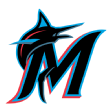 4. Sixto Sanchez, RHP, Marlins
4. Sixto Sanchez, RHP, Marlins
As mentioned above, Sanchez will have a lower strikeout rate than his raw stuff suggests due to the sinker shape of his electric fastball. The ground balls it produces may actually make him a better pitcher, but the Marlins' lineup and the lower strikeout rate make him a little less attractive for fantasy purposes.
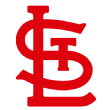 5. Dylan Carlson, OF, Cardinals
5. Dylan Carlson, OF, Cardinals
To put this in context, Carlson could pretty easily be better than Arozarena, with comparable scouting grades on his relevant skills, and he also closed 2020 in the big leagues on a strong note. There's a little less expected at the plate and on the basepaths, but the margin from one to five on this list isn't that big; it could easily flip after a month of games.
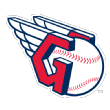 6. Triston McKenzie, RHP, Indians
6. Triston McKenzie, RHP, Indians
McKenzie has a solid spot in the Indians' rotation and performed well in his 2020 MLB debut after missing 2019 due to injury. McKenzie had some velocity fluctuations in 2020 and has always been on the thin side, so I wouldn't expect 200 innings of mid-rotation performance (to be fair, I wouldn't expect that from almost anyone after the shortened 2020 campaign), but a strong 130-150 innings with his bat-missing fastball and Cleveland's pitching development machine behind him should be a nice find for your team.
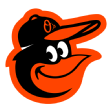 7. Ryan Mountcastle, OF, Orioles
7. Ryan Mountcastle, OF, Orioles
Mountcastle hasn't been a prospect who has been high on a top 100 at any point in part because of his limited defensive profile, which makes him a classic better-for-fantasy-than-real-life candidate. He's gradually improved his approach and looks like a Nick Castellanos type who will give above-average hit and power production, but without many steals or standout plate discipline figures.
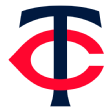 8. Alex Kirilloff, OF, Twins
8. Alex Kirilloff, OF, Twins
Kirilloff is similar to Mountcastle in overall skill set, but Kirilloff is a better pure hitter with a better approach, which also gives him a better chance to get to his power in games. He's behind Mountcastle on this list because he hasn't played a big league or Triple-A regular season game yet, the Twins have some options behind him (including another on this list) and he'll likely be platooned with Brent Rooker even if he holds the spot all year.
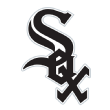 9. Nick Madrigal, 2B, White Sox
9. Nick Madrigal, 2B, White Sox
Madrigal is a study in extreme, with a top-of-the-scale contact rate, along with positional value and speed to contribute stolen bases as well. He has little to no in-game power due to his offensive approach, but will likely grow into a little more over time.
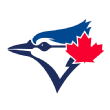 10. Nate Pearson, RHP, Blue Jays
10. Nate Pearson, RHP, Blue Jays
Pearson has the upside of coming up, things click, and he's Noah Syndergaard. He's lower on the list because he had fastball command issues in his 2020 look after not having many in the minor leagues, and there are also injury concerns that come with a guy that throws 100 mph. The Jays have a number of prospect options behind him that could get looks if the best long-term move for Pearson is to get time in Triple-A, so any hiccups could lead to getting optioned, though he'll probably break camp in the rotation.
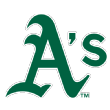 11. A.J. Puk, LHP, A's
11. A.J. Puk, LHP, A's
Puk is coming off of shoulder surgery, just after having Tommy John surgery on his elbow, right after he broke out in pro ball and realized the potential that he teased scouts with at the University of Florida. All of the indications are positive and Puk has a real shot to either break camp in the rotation, or be the 6th starter and begin in Triple-A (behind Mike Fiers), but he's also thrown only 36 2/3 pro innings since 2017.
 12. Michael Kopech, RHP, White Sox
12. Michael Kopech, RHP, White Sox
Right now, Kopech is in a 5th starter competition with recent non-tender Carlos Rodon but should win that job eventually. He opted out of the 2020 season after recovering from Tommy John surgery, which he had a couple outings after breaking out in the big leagues. Like Pearson, Kopech is good enough to become a phenomenon for a contender in 2021 or spend over half the year in Triple-A or injured, or he could also excel in the bullpen, like teammate Garrett Crochet.
 13. Trevor Rogers, LHP, Marlins
13. Trevor Rogers, LHP, Marlins
I've written a number of times about the embarrassment of prospect riches the Marlins (and their second-ranked farm system) have in their upper minors and on their 40-man roster. Rogers and Sanchez are at the front of that pitching group in the big leagues, but if one falters or get hurt, there's a number of talented young arms that could assert themselves. Rogers improved his breaking ball and command in his 2020 MLB debut and now looks like he'll be a solid mid-rotation lefty.
 14. Cristian Pache, OF, Braves
14. Cristian Pache, OF, Braves
Pache is more useful in real life than fantasy, due to his elite speed, defense, and arm strength, but his base-stealing instincts keep those skills from impacting your fantasy team. Pache has the raw ability to hit .275 with 20-25 homers, but his plate discipline and approach have never fully tapped into his upside. A reasonable expectation is for him to play most of the year in the big leagues and produce fringe-average offensive numbers with a non-trivial amount of stolen bases, but in this area of the list, playing most of the season and having upside is about all you can ask for.
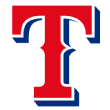 15. Leody Taveras, CF, Rangers
15. Leody Taveras, CF, Rangers
Taveras is a similar type of player to Pache, not quite as physically gifted, but with a better chance for stolen base value. He's a top prospect for the rebuilding Rangers, so there's a better shot he'll stay in the big leagues (he had 119 at-bats with the big club in 2020) to work through tough times, while the Braves have multiple options they'll run out if Pache struggles.
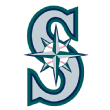 16. Jarred Kelenic, OF, Mariners
16. Jarred Kelenic, OF, Mariners
Kelenic's name was in headlines for some time due to being traded by the Mets, but this weekend was in others due to dumb comments by his team's former president about an extension offer. I don't think the Mariners have a big incentive to rush Kelenic up since he's not on the 40-man and has played only 21 games above A-Ball, but there's a real shot he opens the season in Triple-A and gets a half-season big league look, even without an extension in hand. I wouldn't expect him to torch the league immediately, more likely he'll put up solid average numbers across the board with glimpses of star potential.
 17. Ha-Seong Kim, SS, Padres
17. Ha-Seong Kim, SS, Padres
Kim will open the season as a backup at almost every position on the field and possibly platooning with Jake Cronenworth at second base. His four years, $28 million contract allows him to be optioned if he's struggling to adapt to the bigger velocity in the big league game, but Kim should spend the majority of the season in a utility role, if not taking a regular job at some point. He has solid average tools across the board and will likely be eligible at a number of valuable positions.
 18. Dane Dunning, RHP, Rangers
18. Dane Dunning, RHP, Rangers
Dunning should be a solid No. 4 starter the whole season for a rebuilding Texas club, but he already has an innings cap (even though it's a generous 200 innings) and he missed 2019 with Tommy John surgery, so it may be smart to expect 120-150 innings.
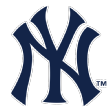 19. Deivi Garcia, RHP, Yankees
19. Deivi Garcia, RHP, Yankees
Garcia has always been expected to max out around 150 innings due to his smaller stature, someone like Rich Hill or Lance McCullers Jr. that can play multiple roles in the postseason after conserving his innings in a number of ways during the regular season. I think Garcia will open as the Yankees' 5th starter.
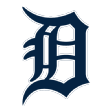 20. Casey Mize, RHP, Tigers
20. Casey Mize, RHP, Tigers
Mize likely gets another big league look in the first half and could stick the rest of the season. Mize and Tarik Skubal will likely be the first two call-ups for a Detroit club that has a non-roster Julio Teheran and recently non-tendered Jose Urena as the projected back of their rotation. I give Mize the edge long-term due to a deeper repertoire, the best secondary pitch, and better command than Skubal, but they project similarly in the short term.
 21. Tarik Skubal, LHP, Tigers
21. Tarik Skubal, LHP, Tigers
Skubal was just okay in his 2020 MLB debut but has mid-rotation upside as a lefty that can dominate primarily with his whiff-inducing fastball and command, but has a solid four-pitch mix.
 22. Ryan Jeffers, C, Twins
22. Ryan Jeffers, C, Twins
Jeffers has the edge over Mitch Garver as the regula catcher for Minnesota for now, but it'll be a timeshare. Jeffers had a solid 2020 MLB debut and is now a top 100 prospect, but most catchers have their offensive performance muted the more time they spend behind the plate, so his value is positionally dependent.
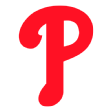 23. Spencer Howard, RHP, Phillies
23. Spencer Howard, RHP, Phillies
Howard is in the mix with free-agent signings Matt Moore and Chase Anderson for a fifth starter job and likely gets an extended look at some point in 2020. He has bat-missing stuff and enough command to start, but could get stuck behind veteran options if they perform well.
 24. Wander Franco, SS, Rays
24. Wander Franco, SS, Rays
The best prospect in baseball and best one in some time. He hasn't played a game in Double-A yet and the Rays are deep everywhere at the upper levels and on the 40-man roster. The Rays also tend to play things conservatively on service time, but if Franco keeps roasting the minors, he'll be Tampa Bay's best option for almost any lineup spot that opens up, which is why he'll play multiple positions in the minors. I wouldn't expect him in the first half, and he'll likely need an injury or big slump ahead of him, because the Rays won't call him up to hit for two weeks; he's going to come up to stay up. In the short-term I'd project above average across-the-board type metrics in all categories rather than awe-inducing stats he may produce in a few years.
 25. Andrew Vaughn, 1B, White Sox
25. Andrew Vaughn, 1B, White Sox
Vaughn isn't on the 40-man but is probably the best long-term (i.e. a starter has an IL stint) for first base, designated hitters, or any outfield spot, since the extra outfielder projects as the DH right now. Vaughn may be the best hit/power/approach combo on this list and probably comes up at some point in 2021 for the going-for-it White Sox, but a spot will have to come open for it to happen.
 26. Alejandro Kirk, C, Blue Jays
26. Alejandro Kirk, C, Blue Jays
Kirk is the third catcher, likely starting in Triple-A but is a good enough catcher to replace an injured Danny Jansen or Reese McGuire and an elite enough hitter to replace a struggling/hurt Rowdy Tellez at DH. A regular DH with catcher eligibility would seem like a solid outcome on the fantasy end of things.
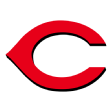 27. Tyler Stephenson, C, Reds
27. Tyler Stephenson, C, Reds
Stephenson will likely open the season as Tucker Barnhart's backup/platoon partner but Barnhart isn't that good and he's in a walk year, with Stephenson the untradable future of the position. Stephenson has 30-homer raw power and everyday catching ability, but hasn't tapped into it much at the upper levels, opting for more contact.
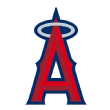 28. Brandon Marsh, OF, Angels
28. Brandon Marsh, OF, Angels
With Dexter Fowler as the likely right fielder to start the year, Jo Adell (graduated) and Marsh are the next options for an extended call-up when Fowler or Justin Upton or (God forbid) Mike Trout needs a replacement. Marsh is a better bet to hit than Adell and thus is a better bet to stick when he comes up, and Marsh's upside is above average across the board.
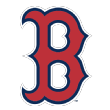 29. Bobby Dalbec, 1B, Red Sox
29. Bobby Dalbec, 1B, Red Sox
Dalbec right now is slated to play first base, even though he's a natural third baseman. He has huge power, but likely won't hit for much average. There's also competition lurking in Marwin Gonzalez, Michael Chavis, Christian Arroyo, and Jeter Downs.
 30. Jazz Chisholm, SS, Marlins
30. Jazz Chisholm, SS, Marlins
Chisholm is fourth in Miami's middle infield pecking order, with Jon Berti and Miguel Rojas starting and Isan Diaz as the bench/platoon option. If one of those spots comes open, Chisholm will probably come up and he has power/speed upside, but some swing-and-miss concerns.
 31. Jonah Heim, C, Rangers
31. Jonah Heim, C, Rangers
Heim has flown under the radar but was acquired from Oakland in the Elvis Andrus deal, as the prospect that was "purchased" for eating some of Andrus' deal. He'll start in a catcher platoon but is better than Jose Trevino for my money and will hold down the starting spot until Sam Huff is ready, likely in 2022. You'll get bulk but not a ton of offensive impact.
 32. Matt Manning, RHP, Tigers
32. Matt Manning, RHP, Tigers
Manning is probably third in line behind Mize and Skubal for a call-up, but has the highest pure upside of the group, and will almost certainly get an extended 2021 look. He has big strikeout potential.
 33. Logan Gilbert, RHP, Mariners
33. Logan Gilbert, RHP, Mariners
Gilbert isn't on the 40-man but is the best long-term fill if there's a problem at the back of the rotation, and that will almost certainly happen by the All-Star break.
 34. Keegan Akin, LHP, Orioles
34. Keegan Akin, LHP, Orioles
These next two Orioles pitchers aren't anywhere close to as talented as the names around them, all around the middle of the Top 100, but they're likely to open the season in the rotation. Akin is a solid lefty prospect, probably settles as a back-end starter that relies on his changeup.
 35. Dean Kremer, RHP, Orioles
35. Dean Kremer, RHP, Orioles
Kremer was acquired from the Dodgers in the 2018 Manny Machado deal and is either a back-end starter or middle reliever, with a standout curveball as the carrying trait.
 36. Brendan McKay. LHP, Rays
36. Brendan McKay. LHP, Rays
Like Puk, McKay is a former top 50 overall prospect coming off of shoulder surgery with solid indications. Due to Tampa Bay's insane pitching depth, it's not for sure he is even in the big leagues in the first half, but likely will find his way into meaningful innings at some point in 2021.
 37. Trevor Larnach, OF, Twins
37. Trevor Larnach, OF, Twins
If Kirilloff falters, Larnach is the best long-term option to replace him and is a similarly valued prospect as well.
 38. MacKenzie Gore, LHP, Padres
38. MacKenzie Gore, LHP, Padres
Gore didn't get a big league look in 2020 somewhat mysteriously (the issue is covered in his Top 100 blurb) and now Chris Paddack is the fifth starter, with Adrian Morejon and Ryan Weathers on the 40-man while Gore is not. I assume Gore gets a big league look in the second half, but there aren't many spots he can take in the new Padres rotation.
 39. Garrett Crochet, LHP, White Sox
39. Garrett Crochet, LHP, White Sox
Crochet is probably a non-closer reliever all year, so the value would come if he has Josh Hader-esque peripherals, which he might.
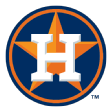 40. Forrest Whitley. RHP, Astros
40. Forrest Whitley. RHP, Astros
Whitley has been a roller coaster the last few years and is probably the seventh starter right now behind Luis Garcia, but has the raw stuff to dominate in short stints in any role.
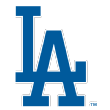 41. Keibert Ruiz, C, Dodgers
41. Keibert Ruiz, C, Dodgers
Ruiz is the third catcher for the Dodgers, is on the 40-man, and has elite contact skills, so he's likely to return some sort of value. He also has a real chance to be the headliner in any major Dodgers trade (Tony Gonsolin is the other leading candidate), which would likely give him more playing time.
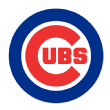 42. Adbert Alzolay, RHP, Cubs
42. Adbert Alzolay, RHP, Cubs
The new back of the Cubs rotation is Jake Arrieta, Alec Mills, and Trevor Williams, so I'm guessing they won't all make 32 starts in 2021. Alzolay is probably the 6th starter/long reliever that gets first crack when a spot opens. Brailyn Marquez is a better long-term prospect, but is covered in the "others of note" because I think his most likely 2020 MLB role is the Garrett Crochet non-closer reliever with big strikeout numbers.
 43. Vidal Brujan, 2B, Rays
43. Vidal Brujan, 2B, Rays
Brujan is bogged down in a loaded Rays middle infield situation, but is on the 40-man and has maybe the best short-term chances of MLB performance of many similar prospects because he can play any position, has elite speed, and elite contact skills.
 44. Isaac Paredes, 3B, Tigers
44. Isaac Paredes, 3B, Tigers
Paredes may have been pushed to a Triple-A opening assignment, but he's the best long-term replacement and one leading candidate ahead of him is a non-roster invite Renato Nunez. Paredes will get something like half a season of playing time and has elite contact skills and some power ability.
 45. Luis Patino, RHP, Rays
45. Luis Patino, RHP, Rays
Patino may be the next Tyler Glasnow-like Rays development story, but because they're so deep in polished arms, it may take a few years. I'd expect a bullpen or spot starter role in 2021, but there's legit frontline potential if it clocks.
 46. Drew Waters, CF, Braves
46. Drew Waters, CF, Braves
Waters is Pache insurance for the Braves, but they're also competing, so they won't have time to stomach mediocre performance and both have loose approaches at the plate, so that's a real possibility. Waters has above-average skills across the board, so pick him up once Pache struggles, because Jake Lamb, Johan Camargo, Ender Inciarte, Abraham Almonte, and Phillip Ervin are the fill-in options aside from the two top prospects.
 47. Nolan Jones, 3B, Indians
47. Nolan Jones, 3B, Indians
Jones is Cleveland's best long-term option for any corner position if the primary options are unavailable or slumping. He's a big-time performer at every level and has 30-homer power, but is a late-count slugger (i.e., homers, walks, strikeouts, takes a lot of pitches) that could have big early strikeout rates, thus streakiness in short runs.
 48. Luis Campusano, C, Padres
48. Luis Campusano, C, Padres
Like Ruiz, Campusano is on the 40-man and is the third catcher for a contender, and has real, top-100 prospect upside.
 49. Hunter Harvey, RHP, Orioles
49. Hunter Harvey, RHP, Orioles
Like the other two Orioles arms on this list, Harvey doesn't belong on talent, but he's a fine reliever and he might be the closer.
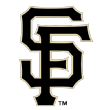 50. Joey Bart, C, Giants
50. Joey Bart, C, Giants
I'll take Bart over Adley Rutschman for the last spot because Bart is the 3rd or 4th catcher and on the 40-man while the Orioles have no reason to call up Rutschman until two weeks into 2022 even if he massacres the minor leagues. Bart is this low because he needs to improve his contact rate (in the minors) and the Giants have three passable options until that happens. Even with a full big league season and a better approach, Bart probably wouldn't post huge offensive numbers.
Others of note
I've grouped these others in contention together by team, since it's important to note the depth of younger options around them, particularly with the Rays and Marlins, the two best farm systems in baseball.
Pitchers: Josiah Gray (Dodgers), Shane McClanahan and Brent Honeywell (Rays), Bryse Wilson and Tucker Davidson (Braves), Brailyn Marquez (Cubs), Max Meyer, Edward Cabrera, Braxton Garrett, and Nick Neidert (Marlins), Jhoan Duran (Twins), Daulton Jefferies (A's), Jackson Kowar, Daniel Lynch, and Carlos Hernandez (Royals), Garrett Whitlock, Tanner Houck, Bryan Mata, and Connor Seabold (Red Sox), J.B. Bukauskas (D'Backs), Ryan Weathers (Padres), Clarke Schmidt (Yankees), Luis Garcia and Bryan Abreu (Astros), Julian Merryweather (Blue Jays)
Position Players: Adley Rutschman (Orioles), Spencer Torkelson (Tigers), Monte Harrison, Jesus Sanchez, Jerar Encarnacion, and J.J. Bleday (Marlins), Jeter Downs (Red Sox), Sam Huff and Anderson Tejeda (Rangers), Taylor Trammell and Julio Rodriguez (Mariners), Josh Lowe and Taylor Walls (Rays)
